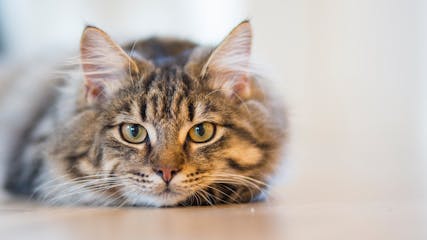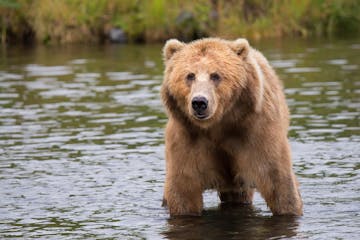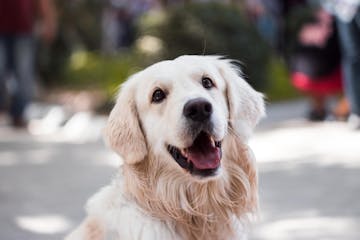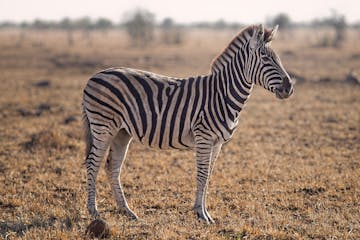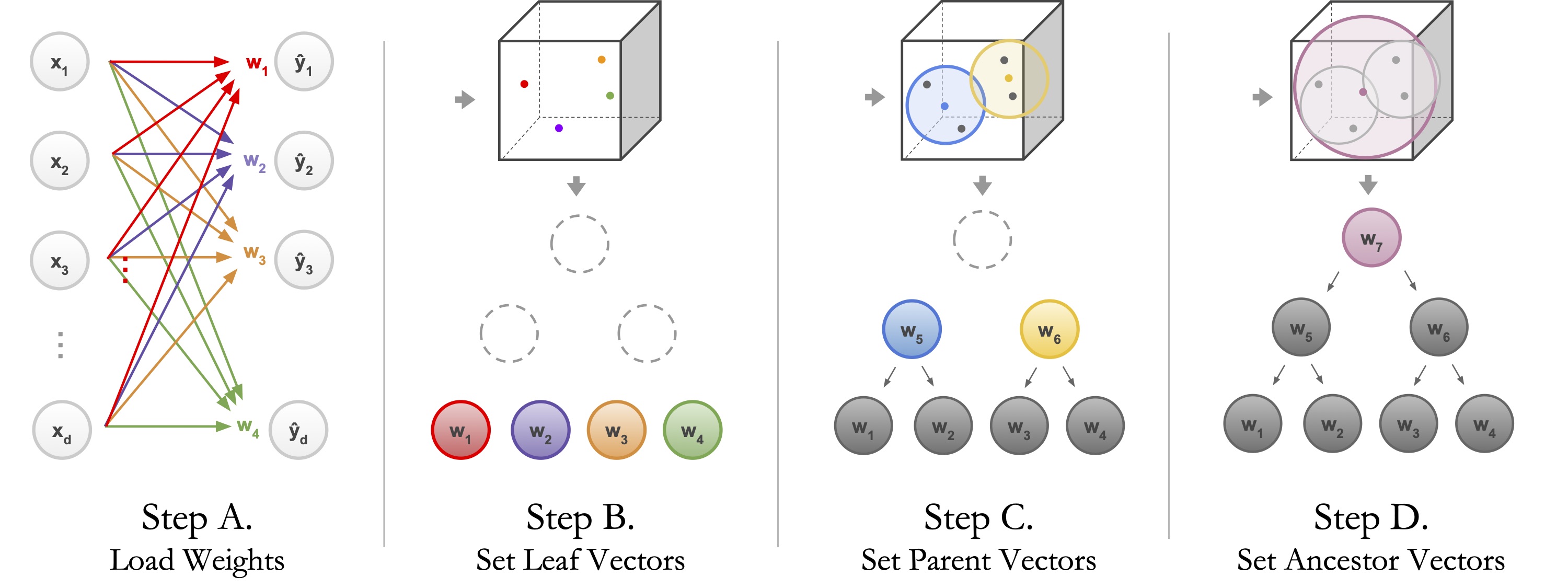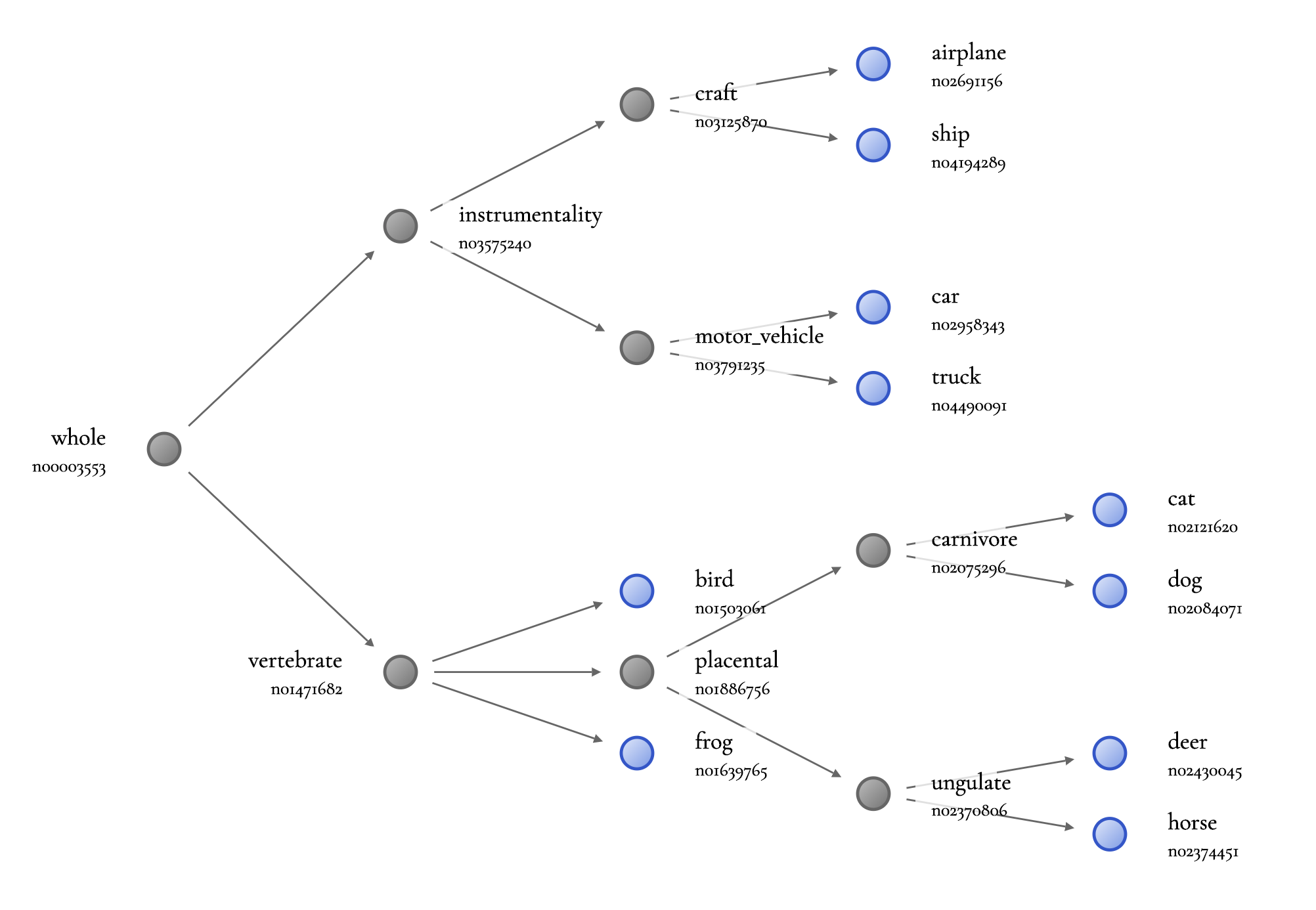Neural-Backed Decision Trees · Site · Paper · Blog · Video
Alvin Wan, *Lisa Dunlap, *Daniel Ho, Jihan Yin, Scott Lee, Henry Jin, Suzanne Petryk, Sarah Adel Bargal, Joseph E. Gonzalez
*denotes equal contribution
NBDTs match or outperform modern neural networks on CIFAR10, CIFAR100, TinyImagenet200, ImageNet and better generalize to unseen classes by up to 16%. Furthermore, our loss improves the original model’s accuracy by up to 2%. We attain 76.60% on ImageNet. See the 3-minute YouTube summary.
Table of Contents
- Quickstart: Running and loading NBDTs
- Convert your own neural network into a decision tree
- Training and evaluation
- Results
- Customize Repository for Your Application
- Citation
Updates
- 2/2/21 Talks: released a 3-minute YouTube video summarizing NBDT, along with a 15-minute technical talk
- 1/28/21 arXiv: updated arXiv with latest results, improving neural network accuracy, generalization, and interpretability (4 new human studies, 600 responses each).
- 1/22/21 Accepted: NBDT was accepted to ICLR 2021. Repository has been updated with new results and supporting code.
Quickstart
Running Pretrained NBDT on Examples
Don't want to download? Try your own images on the web demo.
pip install nbdt, and run our CLI on any image. Below, we run a CIFAR10 model on images from the web, which outputs both the class prediction and all the intermediate decisions. Although the Bear and Zebra classes were not seen at train time, the model still correctly picks Animal over Vehicle for both.
# install our cli
pip install nbdt
# Cat picture - can be a local image path or an image URL
nbdt https://images.pexels.com/photos/126407/pexels-photo-126407.jpeg?auto=compress&cs=tinysrgb&dpr=2&w=32
# Prediction: cat // Decisions: animal (Confidence: 99.47%), chordate (Confidence: 99.20%), carnivore (Confidence: 99.42%), cat (Confidence: 99.86%)
# Zebra picture (not in CIFAR10) - picks the closest CIFAR10 animal, which is horse
nbdt https://images.pexels.com/photos/750539/pexels-photo-750539.jpeg?auto=compress&cs=tinysrgb&dpr=2&h=32
# Prediction: horse // Decisions: animal (Confidence: 99.31%), ungulate (Confidence: 99.25%), horse (Confidence: 99.62%)
# Bear picture (not in CIFAR10)
nbdt https://images.pexels.com/photos/158109/kodiak-brown-bear-adult-portrait-wildlife-158109.jpeg?auto=compress&cs=tinysrgb&dpr=2&w=32
# Prediction: dog // Decisions: animal (Confidence: 99.51%), chordate (Confidence: 99.35%), carnivore (Confidence: 99.69%), dog (Confidence: 99.22%)Pictures are taken from pexels.com, which are free to use per the Pexels license.
Loading Pretrained NBDTs in Code
Don't want to download? Try inference on a pre-filled Google Colab Notebook.
pip install nbdt to use our models. We have pretrained models for ResNet18 and WideResNet28x10 for CIFAR10, CIFAR100, and TinyImagenet200. See Models for adding other models. See nbdt-pytorch-image-models for EfficientNet on ImageNet.
Try below script on Google Colab
from nbdt.model import SoftNBDT
from nbdt.models import ResNet18, wrn28_10_cifar10, wrn28_10_cifar100, wrn28_10 # use wrn28_10 for TinyImagenet200
model = wrn28_10_cifar10()
model = SoftNBDT(
pretrained=True,
dataset='CIFAR10',
arch='wrn28_10_cifar10',
model=model)Example in ~30 lines: See nbdt/bin/nbdt, which loads the pretrained model, loads an image, and runs inference on the image in ~30 lines. This file is the executable nbdt in the previous section. Try this in a Google Colab Notebook.
Convert Neural Networks to Decision Trees
To convert your neural network into a neural-backed decision tree, perform the following 3 steps:
- First, if you haven't already, pip install the
nbdtutility:
pip install nbdt- Second, train the original neural network with an NBDT loss. All NBDT losses work by wrapping the original criterion. To demonstrate this, we wrap the original loss
criterionwith a soft tree supervision loss.
from nbdt.loss import SoftTreeSupLoss
criterion = SoftTreeSupLoss(dataset='CIFAR10', criterion=criterion) # `criterion` is your original loss function e.g., nn.CrossEntropyLoss- Third, perform inference or validate using an NBDT model. All NBDT models work by wrapping the original model you trained in step 2. To demonstrate this, we wrap the
modelwith a custom NBDT wrapper below. Note this model wrapper is only for inference and validation, not for train time.
from nbdt.model import SoftNBDT
model = SoftNBDT(dataset='CIFAR10', model=model) # `model` is your original modelExample integration with repository: See nbdt-pytorch-image-models, which applies this 3-step integration to a popular image classification repository pytorch-image-models.
Example integration with a random neural network in 16 lines [click to expand]
You can also include arbitrary image classification neural networks not explicitly supported in this repository. For example, after installing pretrained-models.pytorch using pip, you can instantiate and pass any pretrained model into our NBDT utility functions.
import torch.nn as nn
from nbdt.model import SoftNBDT
from nbdt.loss import SoftTreeSupLoss
from nbdt.hierarchy import generate_hierarchy
import pretrainedmodels
model = pretrainedmodels.__dict__['fbresnet152'](num_classes=1000, pretrained='imagenet')
# 1. generate hierarchy from pretrained model
generate_hierarchy(dataset='Imagenet1000', arch='fbresnet152', model=model)
# 2. Fine-tune model with tree supervision loss
criterion = nn.CrossEntropyLoss()
criterion = SoftTreeSupLoss(dataset='Imagenet1000', hierarchy='induced-fbresnet152', criterion=criterion)
# 3. Run inference using embedded decision rules
model = SoftNBDT(model=model, dataset='Imagenet1000', hierarchy='induced-fbresnet152')For more information on generating different hierarchies, see Induced Hierarchy.
Want to build and use your own induced hierarchy? [click to expand]
Use the nbdt-hierarchy utility to generate a new induced hierarchy from a pretrained model.
nbdt-hierarchy --arch=efficientnet_b0 --dataset=Imagenet1000Then, pass the hierarchy name to the loss and models. You may alternatively pass the fully-qualified path_graph path.
from nbdt.loss import SoftTreeSupLoss
from nbdt.model import SoftNBDT
criterion = SoftTreeSupLoss(dataset='Imagenet1000', criterion=criterion, hierarchy='induced-efficientnet_b0')
model = SoftNBDT(dataset='Imagenet1000', model=model, hierarchy='induced-efficientnet_b0')For more information on generating different hierarchies, see Induced Hierarchy.
Training and Evaluation
To reproduce experimental results, clone the repository, install all requirements, and run our bash script.
git clone [email protected]:alvinwan/neural-backed-decision-trees.git # or http addr if you don't have private-public github key setup
cd neural-backed-decision-trees
python setup.py develop # install all requirements
bash scripts/gen_train_eval_wideresnet.sh # reproduce paper core CIFAR10, CIFAR100, and TinyImagenet200 resultsWe (1) generate the hierarchy and (2) train the neural network with a tree supervision loss. Then, we (3) run inference by featurizing images using the network backbone and running embedded decision rules. Notes:
- See below sections for details on visualizations, reproducing ablation studies, and different configurations (e.g., different hierarchies).
- To reproduce our ImageNet results, see
examples/imagenetfor ResNet andnbdt-pytorch-image-modelsfor EfficientNet. - For all scripts, you can use any
torchvisionmodel or anypytorchcvmodel, as we directly support both model zoos. Customization for each step is explained below.
1. Generate Hierarchy
Run the following to generate and test induced hierarchies for CIFAR10 based off of the WideResNet model.
nbdt-hierarchy --arch=wrn28_10_cifar10 --dataset=CIFAR10See how it works and how to configure. [click to expand]
The script loads the pretrained model (Step A), populates the leaves of the tree with fully-connected layer weights (Step B) and performs hierarchical agglomerative clustering (Step C). Note that the above command can be rerun with different architectures, different datasets, or random neural network checkpoints to produce different hierarchies.
# different architecture: ResNet18
nbdt-hierarchy --arch=ResNet18 --dataset=CIFAR10
# different dataset: ImageNet
nbdt-hierarchy --arch=efficientnet_b7 --dataset=Imagenet1000
# arbitrary checkpoint
wget https://download.pytorch.org/models/resnet18-5c106cde.pth -O resnet18.pth
nbdt-hierarchy --checkpoint=resnet18.pth --dataset=Imagenet1000You can also run the hierarchy generation from source directly, without using the command-line tool, by passing in a pretrained model.
from nbdt.hierarchy import generate_hierarchy
from nbdt.models import wrn28_10_cifar10
model = wrn28_10_cifar10(pretrained=True)
generate_hierarchy(dataset='Imagenet1000', arch='wrn28_10_cifar10', model=model)
See example visualization. [click to expand]
By default, the generation script outputs the HTML file containing a d3
visualization. All visualizations are stored in out/. We will generate another visualization with larger font size and includes wordnet IDs where available.
nbdt-hierarchy --vis-sublabels --vis-zoom=1.25 --dataset=CIFAR10 --arch=wrn28_10_cifar10
The above script's output will end with the following.
==> Reading from ./nbdt/hierarchies/CIFAR10/graph-induced-wrn28_10_cifar10.json
Found just 1 root.
==> Wrote HTML to out/induced-wrn28_10_cifar10-tree.html
Open up out/induced-wrn28_10_cifar10-tree.html in your browser to view the d3 tree visualization.

Want to reproduce hierarchy visualizations from the paper? [click to expand]
To generate figures from the paper, use a larger zoom and do not include sublabels. The checkpoints used to generate the induced hierarchy visualizations are included in this repository's hub of models.
nbdt-hierarchy --vis-zoom=2.5 --dataset=CIFAR10 --arch=ResNet10 --vis-force-labels-left conveyance vertebrate chordate vehicle motor_vehicle mammal placental
nbdt-hierarchy --vis-zoom=2.5 --dataset=CIFAR10 --arch=wrn28_10_cifar10 --vis-leaf-images --vis-image-resize-factor=1.5 --vis-force-labels-left motor_vehicle craft chordate vertebrate carnivore ungulate craft
nbdt-hierarchy --vis-zoom=2.5 --dataset=CIFAR10 --arch=wrn28_10_cifar10 --vis-color-nodes whole --vis-no-color-leaves --vis-force-labels-left motor_vehicle craft chordate vertebrate carnivore ungulate craft



Generate WordNet hierarchy and see how it works. [click to expand]
Run the following to generate and test WordNet hierarchies for CIFAR10, CIFAR100, and TinyImagenet200. The script also downloads the NLTK WordNet corpus.
bash scripts/generate_hierarchies_wordnet.shThe below just explains the above generate_hierarchies_wordnet.sh, using CIFAR10. You do not need to run the following after running the above bash script.
# Generate mapping from classes to WNID. This is required for CIFAR10 and CIFAR100.
nbdt-wnids --dataset=CIFAR10
# Generate hierarchy, using the WNIDs. This is required for all datasets: CIFAR10, CIFAR100, TinyImagenet200
nbdt-hierarchy --method=wordnet --dataset=CIFAR10See example WordNet visualization. [click to expand]
Generate random hierarchy. [click to expand]
Use --method=random to randomly generate a binary-ish hierarchy. Optionally, use the --seed (--seed=-1 to not shuffle leaves) and --branching-factor flags. When debugging, we set branching factor to the number of classes. For example, the sanity check hierarchy for CIFAR10 is
nbdt-hierarchy --seed=-1 --branching-factor=10 --dataset=CIFAR102. Tree Supervision Loss
In the below training commands, we uniformly use --path-resume=<path/to/checkpoint> --lr=0.01 to fine-tune instead of training from scratch. Our results using a recently state-of-the-art pretrained checkpoint (WideResNet) were fine-tuned. Run the following to fine-tune WideResNet with soft tree supervision loss on CIFAR10.
python main.py --lr=0.01 --dataset=CIFAR10 --arch=wrn28_10_cifar10 --hierarchy=induced-wrn28_10_cifar10 --pretrained --loss=SoftTreeSupLossSee how it works and how to configure. [click to expand]
The tree supervision loss features two variants: a hard version and a soft version. Simply change the loss to HardTreeSupLoss or SoftTreeSupLoss, depending on the one you want.
# fine-tune the wrn pretrained checkpoint on CIFAR10 with hard tree supervision loss
python main.py --lr=0.01 --dataset=CIFAR10 --arch=wrn28_10_cifar10 --hierarchy=induced-wrn28_10_cifar10 --pretrained --loss=HardTreeSupLoss
# fine-tune the wrn pretrained checkpoint on CIFAR10 with soft tree supervision loss
python main.py --lr=0.01 --dataset=CIFAR10 --arch=wrn28_10_cifar10 --hierarchy=induced-wrn28_10_cifar10 --pretrained --loss=SoftTreeSupLossTo train from scratch, use --lr=0.1 and do not pass the --path-resume or --pretrained flags. We fine-tune WideResnet on CIFAR10, CIFAR100, but where the baseline neural network accuracy is reproducible, we train from scratch.
3. Inference
Like with the tree supervision loss variants, there are two inference variants: one is hard and one is soft. Below, we run soft inference on the model we just trained with the soft loss.
Run the following bash script to obtain these numbers.
python main.py --dataset=CIFAR10 --arch=wrn28_10_cifar10 --hierarchy=induced-wrn28_10_cifar10 --loss=SoftTreeSupLoss --eval --resume --analysis=SoftEmbeddedDecisionRulesSee how it works and how to configure. [click to expand]
Note the following commands are nearly identical to the corresponding train commands -- we drop the lr, pretrained flags and add resume, eval, and the analysis type (hard or soft inference). The best results in our paper, oddly enough, were obtained by running hard and soft inference both on the neural network supervised by a soft tree supervision loss. This is reflected in the commands below.
# running soft inference on soft-supervised model
python main.py --dataset=CIFAR10 --arch=wrn28_10_cifar10 --hierarchy=induced-wrn28_10_cifar10 --loss=SoftTreeSupLoss --eval --resume --analysis=SoftEmbeddedDecisionRules
# running hard inference on soft-supervised model
python main.py --dataset=CIFAR10 --arch=wrn28_10_cifar10 --hierarchy=induced-wrn28_10_cifar10 --loss=SoftTreeSupLoss --eval --resume --analysis=HardEmbeddedDecisionRulesLogging maximum and minimum 'path entropy' samples. [click to expand]
# get min and max entropy samples for baseline neural network
python main.py --pretrained --dataset=TinyImagenet200 --eval --dataset-test=Imagenet1000 --disable-test-eval --analysis=TopEntropy # or Entropy, or TopDifference
# download public checkpoint
wget https://github.com/alvinwan/neural-backed-decision-trees/releases/download/0.0.1/ckpt-TinyImagenet200-ResNet18-induced-ResNet18-SoftTreeSupLoss-tsw10.0.pth -O checkpoint/ckpt-TinyImagenet200-ResNet18-induced-ResNet18-SoftTreeSupLoss-tsw10.0.pth
# get min and max 'path entropy' samples for NBDT
python main.py --dataset TinyImagenet200 --resume --path-resume checkpoint/ckpt-TinyImagenet200-ResNet18-induced-ResNet18-SoftTreeSupLoss-tsw10.0.pth --eval --analysis NBDTEntropyMaxMin --dataset-test=Imagenet1000 --disable-test-eval --hierarchy induced-ResNet18
Running zero-shot evaluation on superclasses. [click to expand]
# get wnids for animal and vehicle -- use the outputted wnids for below commands
nbdt-wnids --classes animal vehicle
# evaluate CIFAR10-trained ResNet18 on "Animal vs. Vehicle" superclasses, with images from TinyImagenet200
python main.py --dataset-test=TinyImagenet200 --dataset=CIFAR10 --disable-test-eval --eval --analysis=Superclass --superclass-wnids n00015388 n04524313 --pretrained
# download public checkpoint
wget https://github.com/alvinwan/neural-backed-decision-trees/releases/download/0.0.1/ckpt-CIFAR100-ResNet18-induced-ResNet18-SoftTreeSupLoss.pth -O checkpoint/ckpt-CIFAR10-ResNet18-induced-SoftTreeSupLoss.pth
# evaluate CIFAR10-trained NBDT-ResNet18 on "Animal vs. Vehicle" superclasses, with images from TinyImagenet200
python main.py --dataset-test=TinyImagenet200 --dataset=CIFAR10 --disable-test-eval --eval --analysis=SuperclassNBDT --superclass-wnids n00015388 n04524313 --loss=SoftTreeSupLoss --resume
Visualize decision nodes using 'prototypical' samples. [click to expand]
# get wnids for animal and vehicle -- use the outputted wnids for below commands
nbdt-wnids --classes animal vehicle
# find samples representative for CIFAR10-trained ResNet18, from animal and vehicle ImageNet images
python main.py --dataset-test=Imagenet1000 --dataset=CIFAR10 --disable-test-eval --eval --analysis=VisualizeDecisionNode --vdnw=n00015388 --pretrained --superclass-wnids n00015388 n04524313 # samples for "animal" node
python main.py --dataset-test=Imagenet1000 --dataset=CIFAR10 --disable-test-eval --eval --analysis=VisualizeDecisionNode --vdnw=n00015388 --pretrained --superclass-wnids n00015388 n04524313 # samples for "ungulate" node
# download public checkpoint
wget https://github.com/alvinwan/neural-backed-decision-trees/releases/download/0.0.1/ckpt-CIFAR100-ResNet18-induced-ResNet18-SoftTreeSupLoss.pth -O checkpoint/ckpt-CIFAR10-ResNet18-induced-SoftTreeSupLoss.pth
# find samples representative for CIFAR10-trained NBDT with ResNet18 backbone, from animal and vehicle ImageNet images
python main.py --dataset-test=Imagenet1000 --dataset=CIFAR10 --disable-test-eval --eval --analysis=VisualizeDecisionNode --vdnw=n01466257 --loss=SoftTreeSupLoss --resume --hierarchy=induced-ResNet18 --superclass-wnids n00015388 n04524313 # samples for "animal" node
Visualize inference probabilities in hierarchy. [click to expand]
python main.py --analysis=VisualizeHierarchyInference --eval --pretrained # soft inference by default
Results
We compare against all previous decision-tree-based methods that report on CIFAR10, CIFAR100, and/or ImageNet; we use numbers reported in the original papers (except DNDF, which did not have CIFAR or ImageNet top-1 scores):
- Deep Neural Decision Forest (DNDF, updated with ResNet18)
- Explainable Observer-Classifier (XOC)
- Deep ConvolutionalDecision Jungle (DCDJ)
- Network of Experts (NofE)
- Deep Decision Network (DDN)
- Adaptive Neural Trees (ANT)
- Oblique Decision Trees (ODT)
- Classic Decision Trees
| CIFAR10 | CIFAR100 | TinyImagenet200 | ImageNet | |
|---|---|---|---|---|
| NBDT (Ours) | 97.55% | 82.97% | 67.72% | 76.60% |
| Best Pre-NBDT Acc | 94.32% | 76.24% | 44.56% | 61.29% |
| Best Pre-NBDT Method | DNDF | NofE | DNDF | NofE |
| Our improvement | 3.23% | 6.73% | 23.16% | 15.31% |
Our pretrained checkpoints (CIFAR10, CIFAR100, and TinyImagenet200) may deviate from these numbers by 0.1-0.2%, as we retrained all models for public release.
Customize Repository for Your Application
As discussed above, you can use the nbdt python library to integrate NBDT training into any existing training pipeline, like ClassyVision (ClassyVision + NBDT Imagenet example). However, if you wish to use the barebones training utilities here, refer to the following sections for adding custom models and datasets.
If you have not already, start by cloning the repository and installing all requirements. As a sample, we've included copies of the WideResNet bash script but for ResNet18.
git clone [email protected]:alvinwan/neural-backed-decision-trees.git # or http addr if you don't have private-public github key setup
cd neural-backed-decision-trees
python setup.py develop
bash scripts/gen_train_eval_resnet.shFor any models that have pretrained checkpoints for the datasets of interest (e.g., CIFAR10, CIFAR100, and ImageNet models from pytorchcv or ImageNet models from torchvision), modify scripts/gen_train_eval_pretrained.sh; it suffices to change the model name. For all models that do not have pretrained checkpoint for the dataset of interest, modify scripts/gen_train_eval_nopretrained.sh.
Models
Without any modifications to main.py, you can replace ResNet18 with your favorite network: Pass any torchvision.models model or any pytorchcv model to --arch, as we directly support both model zoos. Note that the former only supports models pretrained on ImageNet. The latter supports models pretrained on CIFAR10, CIFAR100, andd ImageNet; for each dataset, the corresponding model name includes the dataset e.g., wrn28_10_cifar10. However, neither supports models pretrained on TinyImagenet.
To add a new model from scratch:
- Create a new file containing your network, such as
./nbdt/models/yournet.py. This file should contain an__all__only exposing functions that return a model. These functions should acceptpretrained: boolandprogress: bool, then forward all other keyword arguments to the model constructor. - Expose your new file via
./nbdt/models/__init__.py:from .yournet import *. - Train the original neural network on the target dataset. e.g.,
python main.py --arch=yournet18.
Dataset
Without any modifications to main.py, you can use any image classification dataset found at torchvision.datasets by passing it to --dataset. To add a new dataset from scratch:
- Create a new file containing your dataset, such as
./nbdt/data/yourdata.py. Say the data class isYourData10. Like before, only expose the dataset class via__all__. This dataset class should support a.classesattribute which returns a list of human-readable class names. - Expose your new file via
'./nbdt/data/__init__.py':from .yourdata import *. - Modify
nbdt.utils.DATASETSto include the name of your dataset, which isYourData10in this example. - Also in
nbdt/utils.py, modifyDATASET_TO_NUM_CLASSESandDATASET_TO_CLASSESto include your new dataset. - (Optional) Create a text file with wordnet IDs in
./nbdt/wnids/{dataset}.txt. This list should be in the same order that your dataset's.classesis. You may optionally use the utilitynbdt-wnidsto generate wnids (see note below) - Train the original neural network on the target dataset. e.g.,
python main.py --dataset=YourData10
*Note: You may optionally use the utility
nbdt-wnidsto generate wnids:nbdt-wnids --dataset=YourData10, where
YourDatais your dataset name. If a provided class name fromYourData.classesdoes not exist in the WordNet corpus, the script will generate a fake wnid. This does not affect training but subsequent analysis scripts will be unable to provide WordNet-imputed node meanings.
Tests
To run tests, use the following command
pytest nbdt tests
Citation
If you find this work useful for your research, please cite our paper:
@misc{nbdt,
title={NBDT: Neural-Backed Decision Trees},
author={Alvin Wan and Lisa Dunlap and Daniel Ho and Jihan Yin and Scott Lee and Henry Jin and Suzanne Petryk and Sarah Adel Bargal and Joseph E. Gonzalez},
year={2020},
eprint={2004.00221},
archivePrefix={arXiv},
primaryClass={cs.CV}
}
